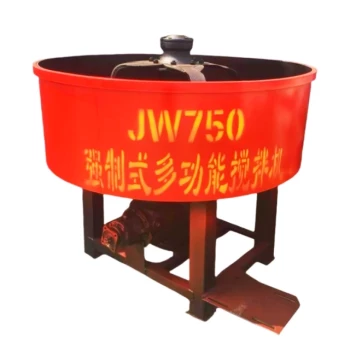Selecting the optimal winch power source isn’t just about raw strength—it’s about matching performance, cost, and environmental adaptability to your specific demands. Whether you’re hauling heavy loads on a construction site or navigating marine environments, the wrong choice can lead to inefficiency, safety risks, or premature wear. This guide breaks down manual, electric, and hydraulic winches, compares their real-world trade-offs, and provides actionable criteria to simplify your decision.
Winch Power Source Fundamentals
Manual Winches: When Simplicity Meets Limited Demand
Manual winches are the most basic option, relying on human power via a hand crank or lever. They’re ideal for:
- Light-duty tasks: Think occasional vehicle recovery or small-scale lifting (under 1 ton).
- Budget-conscious users: No need for external power sources or complex installations.
- Remote locations: Where electricity or hydraulic systems are unavailable.
But there’s a catch: Manual winches require significant physical effort and lack speed or precision. Ever wondered how much time you’d lose cranking a 2-ton load uphill? For frequent or heavy use, they’re impractical.
Electric Winches: Balancing Power and Accessibility
Electric winches, powered by a motor and battery, strike a middle ground between manual and hydraulic systems. Key advantages include:
- Ease of installation: Plug into a 12V/24V system (common in trucks or boats).
- Adjustable speed: Precision control via remote or wired switches.
- Moderate load capacity: Suitable for most recreational towing (up to 10,000 lbs).
Limitations: Electric motors can overheat during prolonged use, and performance dips in extreme cold or wet conditions. Hydraulic systems, however, don’t face these issues—more on that next.
Hydraulic Winches: Heavy-Duty Applications Unveiled
Hydraulic winches leverage a vehicle’s or standalone hydraulic pump to deliver unmatched durability and power. They excel in:
- Continuous heavy lifting: No overheating, even with 20,000+ lbs loads.
- Harsh environments: Marine-grade corrosion resistance and submersible designs.
- Industrial settings: Mining, oil rigs, or shipyards where reliability is critical.
Science backs this up: Studies show hydraulic systems maintain 90%+ torque efficiency under load, while electric winches lose up to 30% efficiency when overheated.
Key Decision Factors for Winch Selection
Load Capacity vs. Power Source Limitations
- Manual: Max 1–2 tons; best for infrequent, low-intensity tasks.
- Electric: 2–5 tons (short bursts); 1–3 tons (continuous).
- Hydraulic: 5+ tons indefinitely; the choice for industrial-scale demands.
Pro tip: Always derate your winch by 20% for safety. A 10,000-lb hydraulic winch should handle 8,000 lbs in real-world conditions.
Environmental Adaptability and Maintenance Demands
| Power Type | Cold Weather | Wet/Marine Use | Maintenance Needs |
|---|---|---|---|
| Manual | High (no electronics) | Moderate (rust risk) | Low (lubricate gears) |
| Electric | Poor (battery drain) | Risky (short circuits) | Medium (clean contacts, check wiring) |
| Hydraulic | Excellent | Excellent (sealed systems) | High (fluid checks, pump upkeep) |
Did you know? Marine hydraulic winches require stainless steel components and annual fluid flushes to prevent saltwater corrosion.
Total Cost of Ownership Across Power Types
- Manual: $100–$500; minimal upkeep but labor-intensive.
- Electric: $300–$2,000; replace batteries/motors every 3–5 years.
- Hydraulic: $1,500–$10,000; higher upfront cost but decades of service with proper care.
Long-term view: A $5,000 hydraulic winch outlasts three $1,500 electric models in a 10-year industrial timeline.
Conclusion: Match the Winch to Your Mission
- DIY/occasional use: Manual or mid-range electric.
- Frequent heavy lifting: Invest in hydraulic systems.
- Marine/extreme conditions: Hydraulic is non-negotiable.
For those prioritizing reliability in demanding environments, Garlway’s hydraulic winches offer engineered durability—tools built to power through the toughest jobs without faltering.
Final thought: When your project’s success hinges on consistent power, what’s more valuable—short-term savings or long-term performance?
Related Products
- Ready Mixer Machine for Construction Ready Mix Machinery
- Electric and Hydraulic Winch for Heavy Duty Applications
- Portable Concrete Mixer Machine Equipment for Mixing Concrete
- Small Electric Winch 120V and 240V for Compact Applications
- Commercial Construction Mixer Machine for Soil Cement Mixing Concrete
Related Articles
- How Ignoring Concrete Mixer Manuals Endangers Workers and Invites Legal Consequences
- How to Maintain Hydraulic Systems in Concrete Mixers: A Safety-Focused Guide
- Optimizing Concrete Mixer Safety: How Proactive Tire and Suspension Maintenance Prevents Catastrophic Failures
- How to Master Concrete Mixer Operation: Training, Certification, and Safety Protocols
- How to Classify and Resolve Concrete Mixer Hazards with Compliance




















